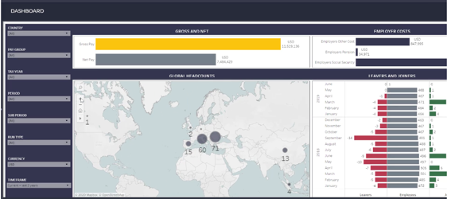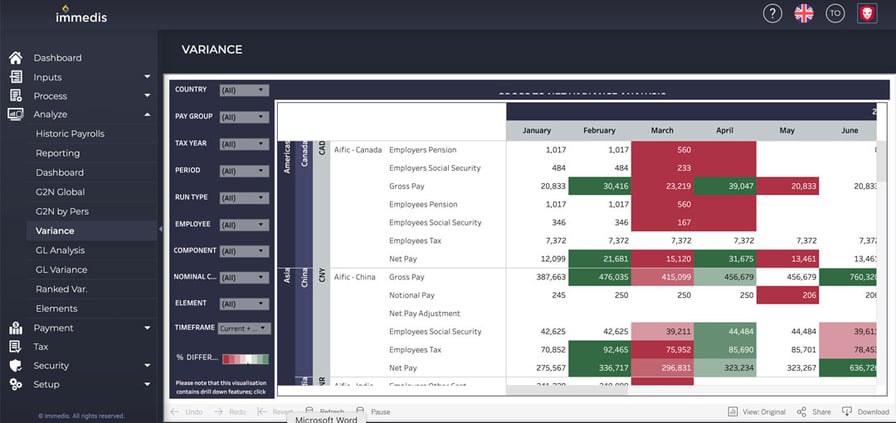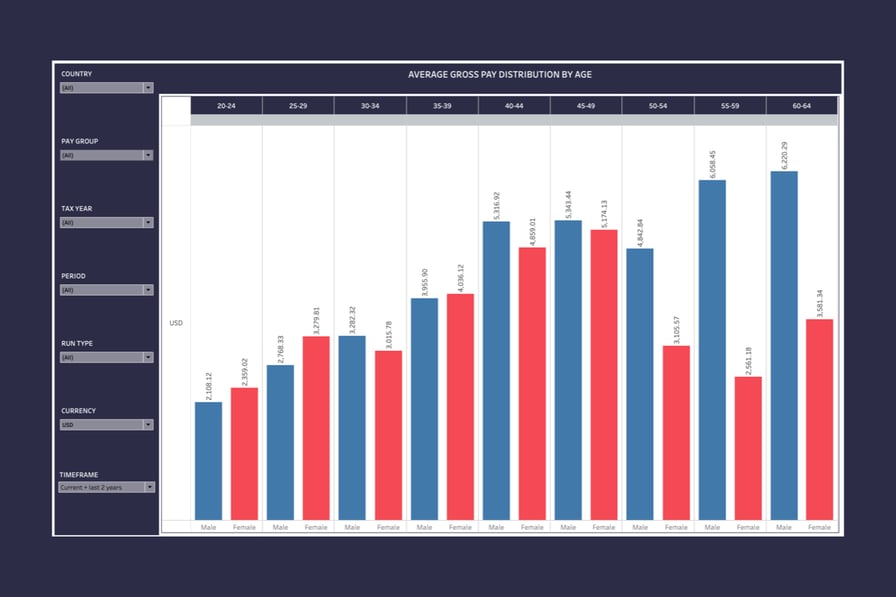At our core, we are a data-driven global payroll solution pursuing a goal to provide customers with the information they need to make better business decisions. A fundamental component in ensuring we give customers the data required for such outcomes is the reporting and analytics capabilities of the Immedis Platform. However, over the years, I have found that often customers are unaware of the full depth and breadth of the platform’s analytics features.
So my goal today is to offer a look inside this function to demonstrate how customers can fully leverage our reports to satisfy everyone from the CFO to global payroll managers and HR.
What are the reports available on the platform?
Having a centralized repository of payroll information means that there are multiple reports you can generate automatically and in real-time.
- Dashboard
- G2N Global
- G2N Personal
- Variance
- GL Analysis
- Ranked Variance
- HR Insights
- Elements
Within each report, you can filter by pay group and date range.
Top tips for using the reports features
Tip #1
Want to get as granular as possible? A drill-down functionality is available by clicking the Next Tier button and clicking the + or – icons to get as specific as you want.
Tip #2
Want a glance at your entire global payroll? Select Analyze>Dashboard to access an overall view of information such as the gross to net pay amounts versus employer costs at an international level.
Tip #3
Want to know about global payroll in one country? You can easily filter across regions by selecting the region from the map view and choosing the option ‘Keep Only’ so that all the statistics are displayed for the chosen region. Select ‘Exclude’ to simply remove a particular region. Various filtering options are also available, such as filtering by country, pay group, tax year, period, sub-period, run type, currency, and time frame.
Tip #4
The Gross to Net analysis report presents a tabular view of all pay elements broken down by region, pay group, and currency. All employer and employee pay elements are represented - pension payments, social security, and notional pay. You can filter the data on joiners and leavers too.
Tip #5
When you select Analyze>Reporting, it brings you to a simplified view of primary payroll results. You can display gross to net, net to gross, employer social security, and even retrieve individual payslips for employees for different periods.

Tip #6
The map view allows you to zoom in instantly and drill down to some high-level statistics within your organization, such as the number of leavers and joiners. You can also search for this data within a specific tax year.
Tip #7
Under Elements, you can explore earning analysis across time broken down by individuals, region, pay group, and currency. It is also where you can filter data and remove an item from the list of components, such as expenses, to get an accurate record of base pay.
How to use Variance reports to satisfy compliance obligations and HR insights
As the name suggests, variance reports highlight differences and inconsistencies across your payroll.

One key use of these reports is to satisfy mandatory UK gender pay reporting. Many of our customers also utilize it to gain clear insight into what they are paying their female and male employees. From this, customers can establish company benchmarking reports so that they can track and monitor to see if they are closing any gender pay disparities as they move forward. To fully optimize this reporting feature, your company’s payroll must be integrated with your HCM to efficiently pull the relevant employee personal details.

More use cases for our analytics
Scenario: #1
The CFO wants a report showing payroll costs across 20 geographical locations in US dollars. In short, they want to compare apples to apples, how employees on the same job level are paid in Singapore and Belgium and between specific time frames. However, the report must not include local variances such as bonuses or lunch vouchers.
Within the platform, you can convert to see all the payments in USD, then click down into a single country and drill down into a specific period. Then you can select certain inclusions and exclusions – for example, a bonus and then drill down to identify the components making up the biggest piece of the cost.
Scenario #2
The overall bill for global payroll has escalated in a particular region, and the CFO wants to know what is driving these underlying costs. You can start at the very top Debit/Credit level and drill to see what’s causing a variance. You can then also drill up and down within each employee or into a specific payroll and see individual people in a pay period and each payroll element.
Once you drill into currency to identify regionalized components, you can locate the specific item causing the changes and even remove more elements to find the root cause.
Some Immedis Platform reporting FAQ’s
How do I manage currency consolidations?
Every payroll is locked to a currency of operation, which typically is the local currency. There is a currency exchange (FX) rate hierarchy. You can choose to use the FX rate from the rate the payment was made, or from your corporate reporting rates, or the bank/prevailing market rate.
Is there an internal audit function?
Yes, there is the ability to conduct one- however, a word of caution. Please be aware that if conducting this at the department level, there is the potential for someone to reverse engineer and find out what other employees earn.
Should we allow other business functions access to the platform?
Yes, but be mindful about what access they should have and remember the goal is to have everyone operating from a single source of truth.








